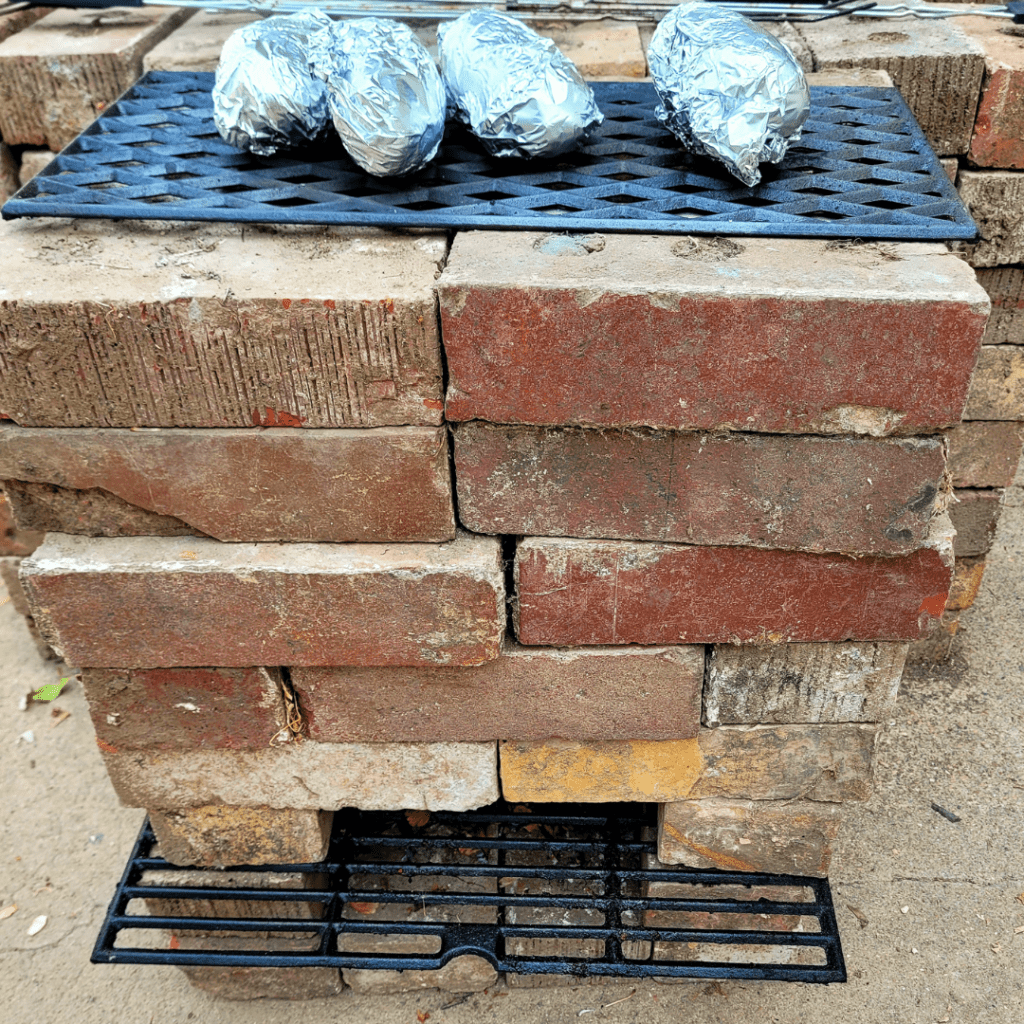Discover the benefits of urban homesteading and how it can revolutionize your city life by helping you grow food, save money, and live more sustainably.
You don’t need a big backyard to enjoy the perks of homesteading. The Benefits of Urban Homesteading: Revolutionize Your City Life is all about making city living greener, simpler, and more self-sufficient. From container gardens and balcony veggies to composting and small DIY projects, urban homesteading lets you take control of your food, your space, and your lifestyle—even in a tiny apartment. I’ll share the tips and tricks I use to turn city spaces into productive, joyful, and sustainable little homesteads.
This is a pinnable post. Tap or hover over any image in this post to pin to your Pinterest Boards.
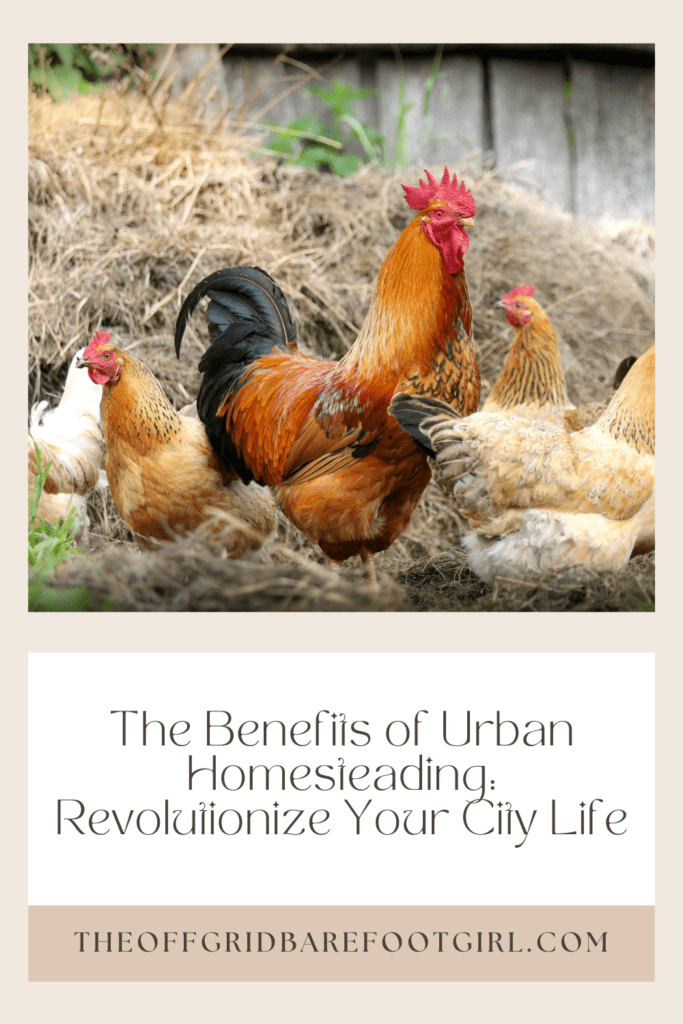
Understanding the Concept of Urban Homesteading
Defining Urban Homesteading
Urban homesteading is a movement that encompasses various sustainable practices aimed at self-sufficiency in an urban environment. It involves creating a more sustainable and resilient lifestyle by growing your own food, raising small animals, preserving food through canning or fermenting, utilizing alternative energy sources, and reducing waste through recycling and composting.
Urban homesteaders often transform their backyards, balconies, or even rooftops into mini-farms where they can harvest fresh produce and eggs from their own chickens. The goal is to reconnect with nature and decrease reliance on outside resources without having to move to the countryside. While it may seem like a daunting task in a concrete jungle, urban homesteading empowers individuals to take control of their food production and reduce their environmental impact in an accessible and manageable way. So whether you have a green thumb or not, anyone can embrace the urban homesteading lifestyle with determination, creativity, and a bit of patience.
Urban homesteading is like regular homesteading, but with a little more concrete involved. It’s all about bringing self-sufficiency and sustainable living to the city. Instead of relying solely on grocery stores and takeout, urban homesteaders take matters into their own hands by growing their own food and even raising animals in their urban dwellings.
A Brief History of Urban Homesteading
Urban homesteading may seem like a trendy modern movement, but its roots actually go way back. In response to economic and social challenges throughout history, people have often turned to urban homesteading to supplement their food supply and reduce their reliance on external sources. Today, the movement has gained momentum as people recognize the benefits of a more self-sufficient and sustainable lifestyle in the midst of urban living.
Sustainable Living in the City: Key Principles of Urban Homesteading
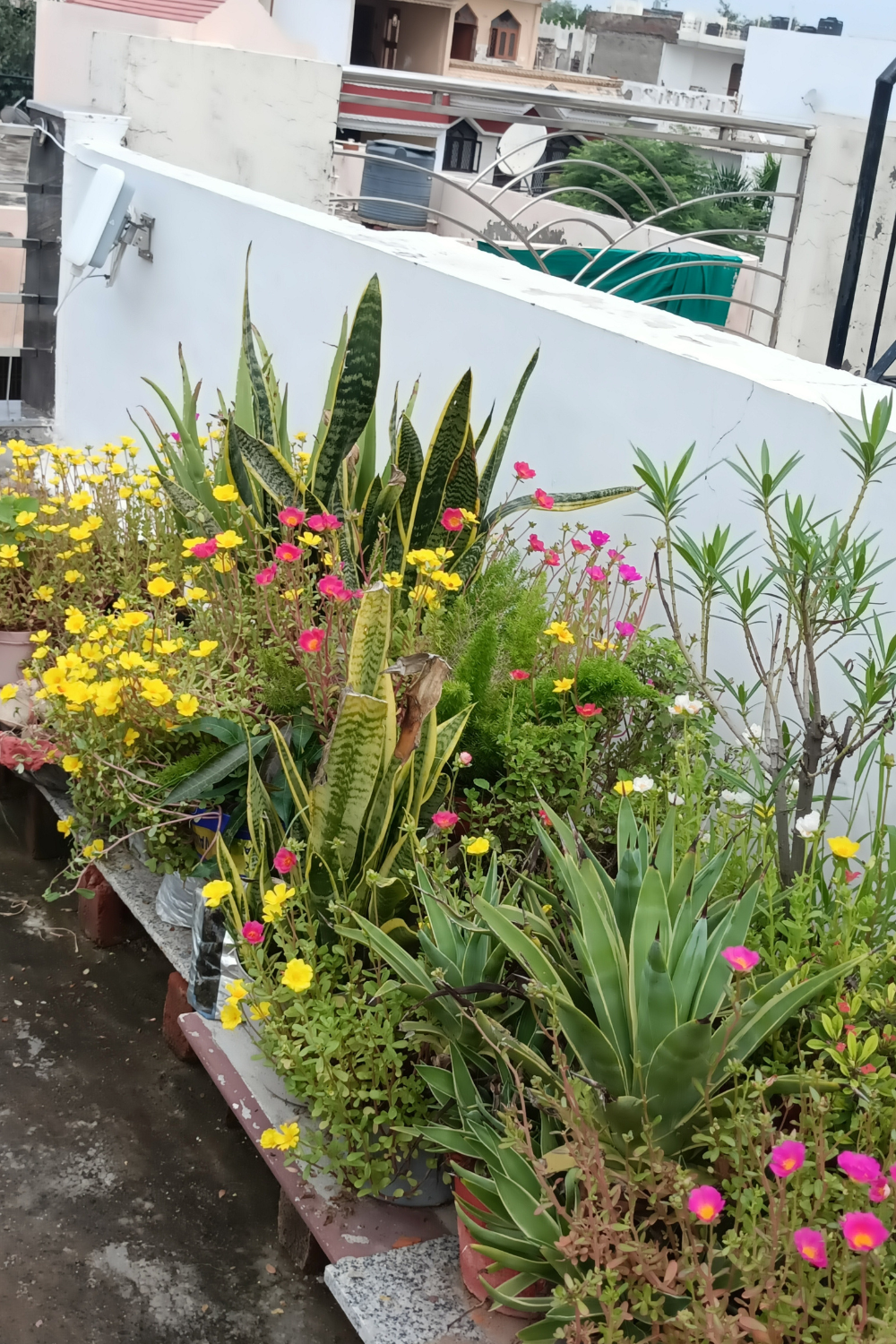
Embracing Self-Sufficiency in an Urban Environment
Urban homesteading is all about taking control of your own sustenance, even in a city environment. By growing your own food, harnessing renewable energy sources, and reducing waste, you can become more self-sufficient and less dependent on outside systems. Plus, you’ll feel pretty accomplished every time you take a bite of a tomato you grew yourself.
Maximizing Limited Space for Homesteading
Maximizing every inch is the key to making your homestead dreams a reality. Start by thinking vertically: utilize trellises and walls to grow climbing plants like cucumbers or peas. Don’t forget about utilizing hanging baskets for herbs or strawberries! Go the extra mile by incorporating raised beds, which not only save on space but also make gardening more accessible. And don’t underestimate the power of compact and multi-purpose tools – invest in a wheelbarrow that doubles as a garden cart or a ladder that folds up for easy storage.
Be creative when it comes to livestock, too – consider smaller breeds of chickens, rabbits, or even quail if you’re short on pasture space. Remember, maximizing limited space is all about innovative solutions and thinking outside the box – so go ahead and turn your homestead into an oasis, no matter how small it may be!
Living in the city often means dealing with limited space, but that shouldn’t stop you from homesteading. Urban homesteaders get creative and make the most of their small living areas by utilizing vertical space, balcony gardens, and even rooftop gardens. You’ll be amazed at the amount of produce you can grow in the tiniest of spaces.
Growing Your Own Food: Establishing an Urban Garden
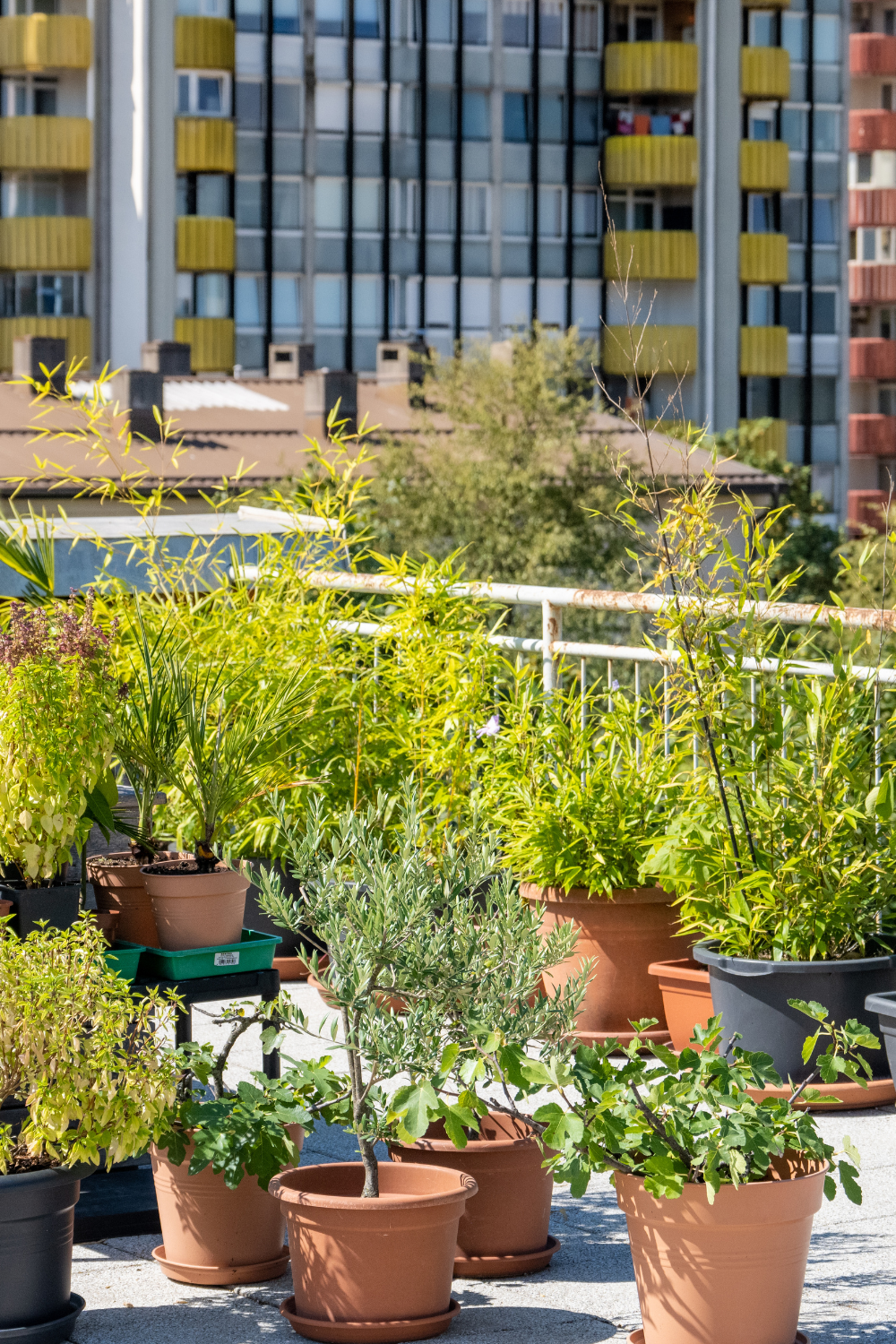
Selecting the Right Plants for Urban Gardening
Not all plants are created equal when it comes to urban gardening. Some thrive in small spaces and can handle the city’s hustle and bustle, while others may struggle. Choose plants that are well-suited for urban environments, such as herbs, leafy greens, and compact fruiting plants. They’ll be your leafy companions in your urban oasis.
Utilizing Vertical Space for Vertical Gardening
Vertical gardening is a fantastic way to make the most out of limited space while also adding vibrant greenery and beauty to any environment. By utilizing vertical space, whether it be a balcony, terrace, or small backyard, one can create a flourishing garden that is not only visually appealing but also highly functional. The key to successful vertical gardening lies in careful planning and strategic placement of plants in various levels or tiers. Hanging planters, wall-mounted racks, and trellises are excellent options for maximizing vertical space.
Additionally, choosing plants with compact growth habits, such as herbs, succulents, or trailing vines, will help optimize the available area. Ongoing maintenance involves regular watering, fertilizing, and pruning to ensure healthy growth. Moreover, incorporating color-coordinated pots and creative plant arrangements can enhance the aesthetics of the garden while showcasing personal style. Vertical gardening is an accessible and rewarding hobby for individuals seeking a stylish yet practical approach to urban gardening.
When you don’t have a sprawling backyard, it’s time to think vertically. Vertical gardening takes advantage of the limited space by growing plants on walls, trellises, or hanging baskets. You’ll not only have a beautiful living wall, but also a bountiful harvest that defies gravity.
Container Gardening in Urban Settings
Containers are your best friends in urban gardening. Whether it’s pots, crates, or repurposed containers, they allow you to grow plants even in the tightest of spaces. Container gardening gives you the flexibility to move your plants around, experiment with different soil compositions, and add a touch of green to every nook and cranny of your urban abode.
Raising Animals in the City: Integrating Livestock into Urban Homesteading
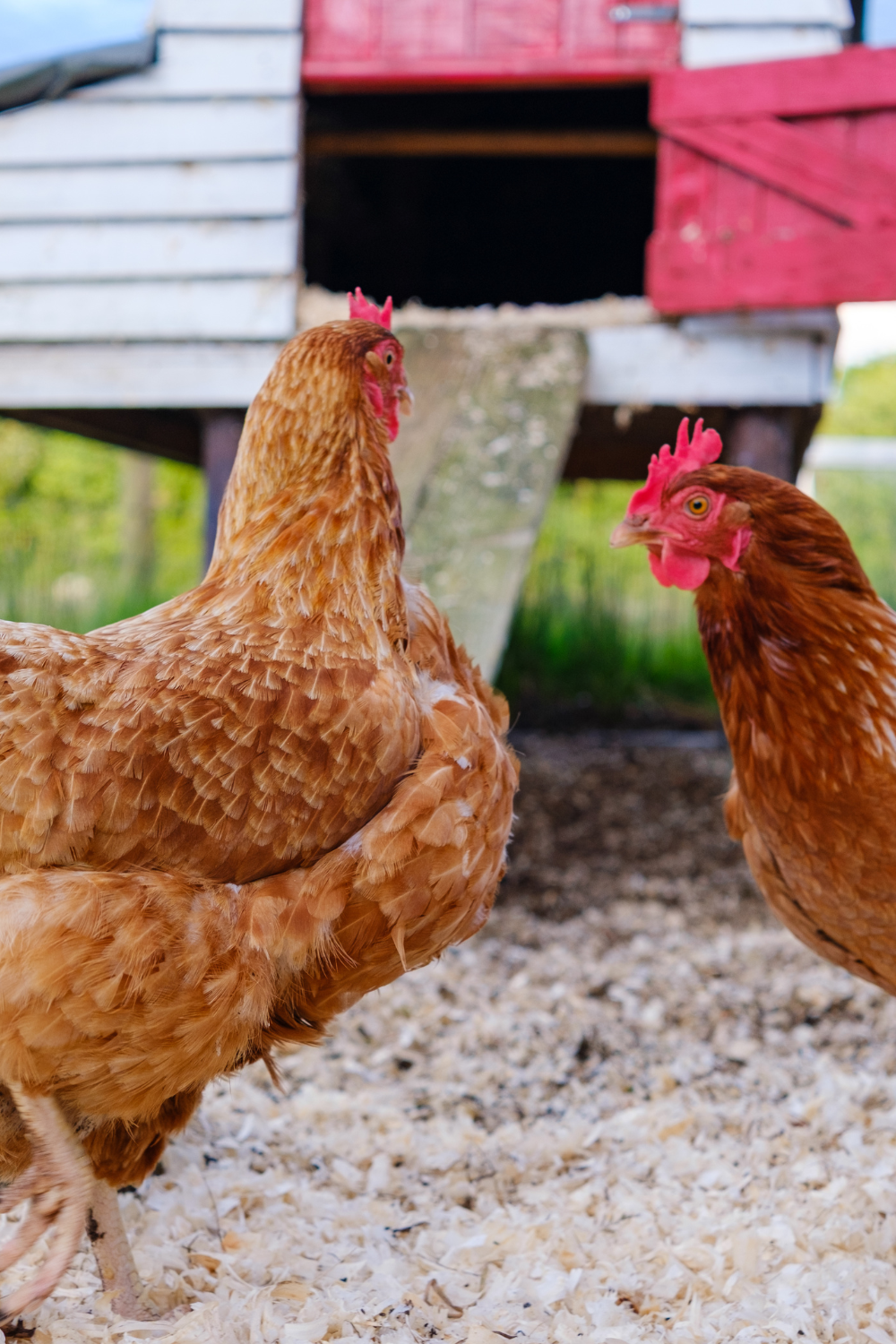
Choosing Small-Scale Livestock for Urban Homesteading
Who said you can’t have a little farm in the city? Urban homesteaders are finding ways to raise small-scale livestock like chickens, rabbits, or even honey bees. These critters can provide fresh eggs, meat, or honey, all while adding a touch of country charm to your urban living environment.
Creating Livestock Housing and Infrastructure in a Limited Space
When it comes to raising animals in the city, space is at a premium. But with a little creativity, you can create cozy and functional housing for your urban livestock. Whether it’s a chicken coop in the corner of your backyard or a rabbit hutch on your apartment balcony, there are ways to make room for your furry or feathery friends.
Managing Animal Waste in an Urban Environment
Animal waste may not be the most glamorous aspect of urban homesteading, but it’s a crucial consideration. Urban homesteaders implement waste management systems that ensure cleanliness, odor control, and even the conversion of waste into compost for their gardens. It’s all about finding sustainable solutions and living harmoniously with the cityscape.
One of the simplest and most effective solutions is to set up a dedicated composting system for animal waste. Using a well-ventilated bin or tumbler, you can safely break down waste into rich compost that nourishes your garden without creating odors or attracting pests. Adding carbon-rich materials like straw, shredded cardboard, or dry leaves helps balance moisture and speeds up decomposition. With a consistent routine of cleaning, layering, and turning the compost, urban homesteaders can transform what might seem like a messy problem into a valuable resource for growing healthy, vibrant plants.
So, whether you’re dreaming of plucking a ripe tomato from your balcony garden or hearing the soothing clucks of a chicken coop in your backyard, urban homesteading offers a path to self-sufficiency and a more sustainable lifestyle, no matter how tiny your urban oasis may be. Get ready to turn your concrete jungle into a greener, more vibrant paradise!
DIY Skills and Self-Sufficiency: Learning and Practicing Essential Urban Homesteading Skills
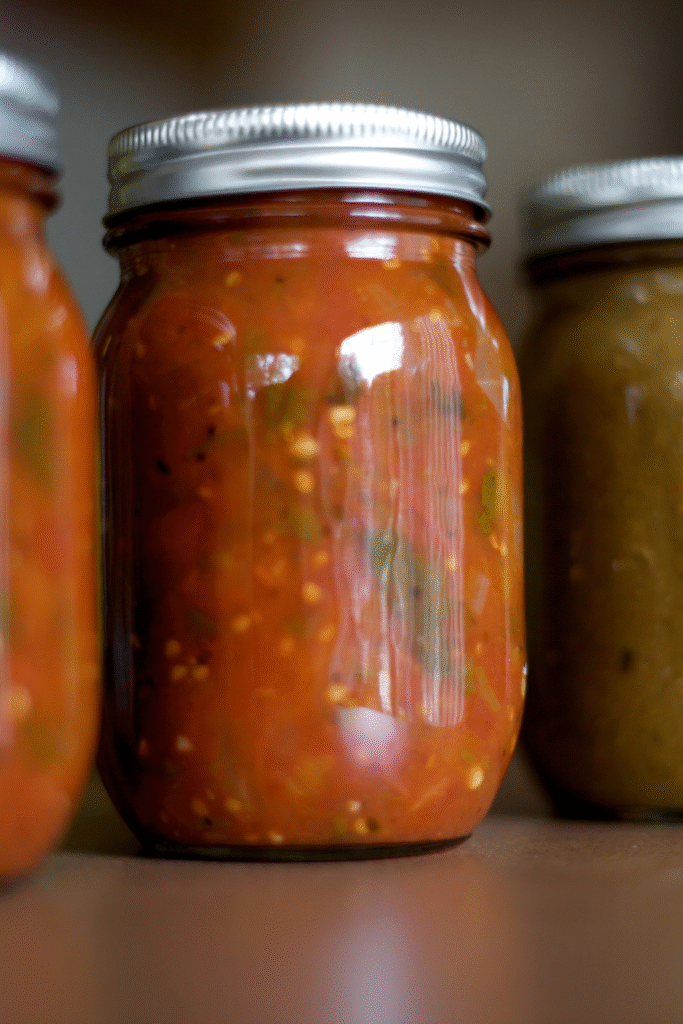
Basic Carpentry and DIY Projects for Urban Homesteaders
When you embrace urban homesteading, you become a jack of all trades. You’ll learn basic carpentry skills that will come in handy for various DIY projects around your urban homestead. From building raised beds for your vegetable garden to constructing a chicken coop for your feathery friends, you’ll be able to tackle these projects with confidence. Plus, the satisfaction of saying, “I built that!” is unbeatable.
Preserving and Canning Food for Year-Round Sustainability
Ever wished you could enjoy the taste of summer’s ripe tomatoes in the dead of winter? With urban homesteading, you can! Learning how to preserve and can your own food allows you to enjoy the bounty of your harvest all year round. Say goodbye to store-bought canned goods and hello to homemade jams, pickles, and sauces. Who needs a grocery store when you can have a pantry full of your own creations?
Learning Sewing and Clothing Repair for Sustainable Fashion
Fashion trends come and go, but sustainability is always in style. With urban homesteading, you can reduce waste and save money by learning sewing and clothing repair skills. Say goodbye to that pile of clothes with missing buttons or torn seams. With a few simple stitches and some creativity, you’ll be able to breathe new life into your wardrobe. Not only will you be the envy of your friends with your unique fashion sense, but you’ll also be reducing your environmental impact. Win-win!
Environmental Benefits: Reducing Waste and Carbon Footprint in Urban Settings
Composting and Vermicomposting in Urban Areas
Living in the concrete jungle doesn’t mean you have to give up on composting. Urban homesteading allows you to turn kitchen scraps and yard waste into nutrient-rich compost, even in limited spaces. With methods like vermicomposting (composting with worms), you can transform organic waste into black gold for your plants. Not only will you reduce landfill waste, but you’ll also have the satisfaction of knowing you’re nourishing your urban oasis.
Implementing Rainwater Harvesting for Urban Homesteads
Who says you can’t catch raindrops in the middle of the city? Urban homesteading opens the door to rainwater harvesting, allowing you to collect and store rainwater for your plants. By utilizing this natural resource, you’ll reduce your reliance on tap water and conserve this precious commodity. Plus, your plants will thank you for the chlorine-free hydration!
Reducing Energy Consumption and Waste through Sustainable Practices
Living sustainably isn’t just about what you grow or how you compost – it’s also about making conscious choices to reduce energy consumption and waste. With urban homesteading, you’ll become a pro at implementing sustainable practices. From using energy-efficient appliances to practicing mindful consumption and minimalism, every small step adds up to a big impact. Plus, saving money on utility bills is always a welcome bonus!
Health and Wellness: Improving Physical and Mental Well-being through Urban Homesteading
Physical Exercise and Urban Farming
Forget crowded gyms and tedious workout routines. With urban homesteading, your backyard becomes your personal fitness haven. Gardening, tending to animals, and other homesteading activities provide a great workout while connecting you with nature. Not only will you be improving your physical health, but you’ll also enjoy the mental benefits of spending time outdoors and getting your hands dirty.
These two seemingly unrelated activities actually share a common goal – promoting health and well-being. Regular physical exercise not only keeps our bodies fit but also releases feel-good hormones that improve our mental state. And when it comes to urban farming, it brings us closer to nature, allowing us to reap the benefits of growing our own food. Digging, planting, watering, and harvesting require physical effort, turning gardening into an excellent workout.
Plus, this form of exercise is a refreshing break from monotony; instead of hitting the gym or jogging on treadmills, we get to connect with the earth and nurture plants. So whether you’re sweating it out in a community garden or simply tending to your backyard veggies, embrace this double-edged sword of exercise and urban farming for a healthier lifestyle in both body and mind!
The Therapeutic Benefits of Gardening and Animal Care
Gardening and animal care have long been recognized for their therapeutic benefits, helping people to feel happier, more relaxed, and connected to nature. Engaging in gardening allows individuals to spend time outdoors, soaking up Vitamin D from the sunlight and breathing in fresh air. The act of caring for plants, tending to their needs, and watching them grow can provide a sense of pride and accomplishment. Plus, gardening has been shown to reduce stress levels by lowering cortisol production.
On the other hand, caring for animals offers companionship and unconditional love. Interacting with pets has been proven to release oxytocin (the “feel-good” hormone) in humans, leading to decreased anxiety and depression symptoms. Moreover, animals provide a sense of purpose as they depend on their owners for feeding, grooming, exercise, and emotional support. Whether cultivating beautiful flowers or nurturing furry friends, gardening and animal care undoubtedly have powerful therapeutic effects that enhance overall well-being in a delightful way.
Urban homesteading offers a therapeutic escape from the hustle and bustle of city life. Gardening and taking care of animals provide a sense of calm and fulfillment. The act of nurturing plants and animals can be incredibly therapeutic, reducing stress and boosting your mental well-being. Plus, the joy of seeing your plants thrive and your animals flourish is priceless.
I have written many posts within these categories for more helpful information on gardening and more!
Access to Fresh and Organic Produce for Optimal Nutrition
When it comes to nourishing our bodies, access to fresh and organic produce plays a crucial role in achieving optimal nutrition. There’s something inherently satisfying about sinking your teeth into a ripe, juicy tomato or crunching on a crisp lettuce leaf that just can’t be replicated with processed alternatives. Fresh fruits and vegetables are not only packed with essential vitamins and minerals, but also contain high levels of antioxidants that support overall health.
However, ensuring access to such produce can sometimes be challenging, especially for those living in food deserts or areas lacking grocery stores. This is where community gardens and farmers’ markets step in as empowering solutions. By cultivating local gardens and promoting partnerships between farmers and consumers, we create opportunities for everyone to enjoy the benefits of farm-fresh goodness.
Allowing these vibrant ingredients into our diets not only fuels us physically but also fosters a deeper connection to nature, enriches flavor profiles, and cultivates an appreciation for sustainable farming practices – creating a win-win situation for both our bodies and the planet.
One of the greatest rewards of urban homesteading is having access to fresh, organic produce right at your doorstep. Say goodbye to wilted and overpriced grocery store vegetables. With your own urban farm, you’ll have a constant supply of nutritious goodness. Eating fresh, nutrient-rich food not only improves your physical health but also adds a burst of flavor to your meals. Who knew vegetables could taste this good?
Community and Connection: Building Stronger Neighborhoods through Urban Homesteading
Sharing Resources and Collaborating with Neighbors
Urban homesteading not only benefits you but also strengthens the bonds within your community. Sharing resources and collaborating with neighbors creates a sense of camaraderie and community spirit. Whether it’s trading surplus vegetables, exchanging skills, or pooling resources for larger projects, urban homesteading brings people together. After all, a bountiful harvest is even sweeter when shared with friends. Urban homesteading presents a multitude of benefits for individuals, communities, and the environment.
By embracing sustainable living practices, growing our own food, raising animals, acquiring DIY skills, and prioritizing environmental responsibility, we can create a more resilient and self-sufficient urban landscape. Not only does urban homesteading provide us with fresh and organic produce, but it also fosters a sense of connection to nature, improves physical and mental well-being, reduces waste, and builds stronger communities. So, whether you have a small balcony or a tiny backyard, urban homesteading offers a pathway toward a greener, healthier, and more sustainable future in the heart of the city.
Become Your Own Backyard Farmer: Grow, Harvest, and Thrive!
Dreaming of fresh eggs, homegrown vegetables, or a self-sufficient backyard? Becoming a Backyard Farmer is your step-by-step guide to turning your outdoor space into a productive, sustainable homestead. From raising chickens and planting a thriving garden to composting and managing small livestock, my book shares the tips, tricks, and personal experiences I’ve learned living off-grid. Whether you have a tiny backyard or a sprawling lot, it’s packed with practical advice to help you grow your food, save money, and embrace the joys of backyard farming—one barefoot step at a time!

Conclusion
Managing animal waste may not be glamorous, but it’s a key part of successful urban homesteading. With thoughtful systems like composting and routine maintenance, what seems like a messy challenge can become a valuable resource for your garden. The goal is balance—keeping your space clean, your home odor-free, and your plants thriving. Embracing practical, sustainable solutions lets you live harmoniously with both your animals and your city environment, turning everyday chores into steps toward a greener, more self-sufficient lifestyle.
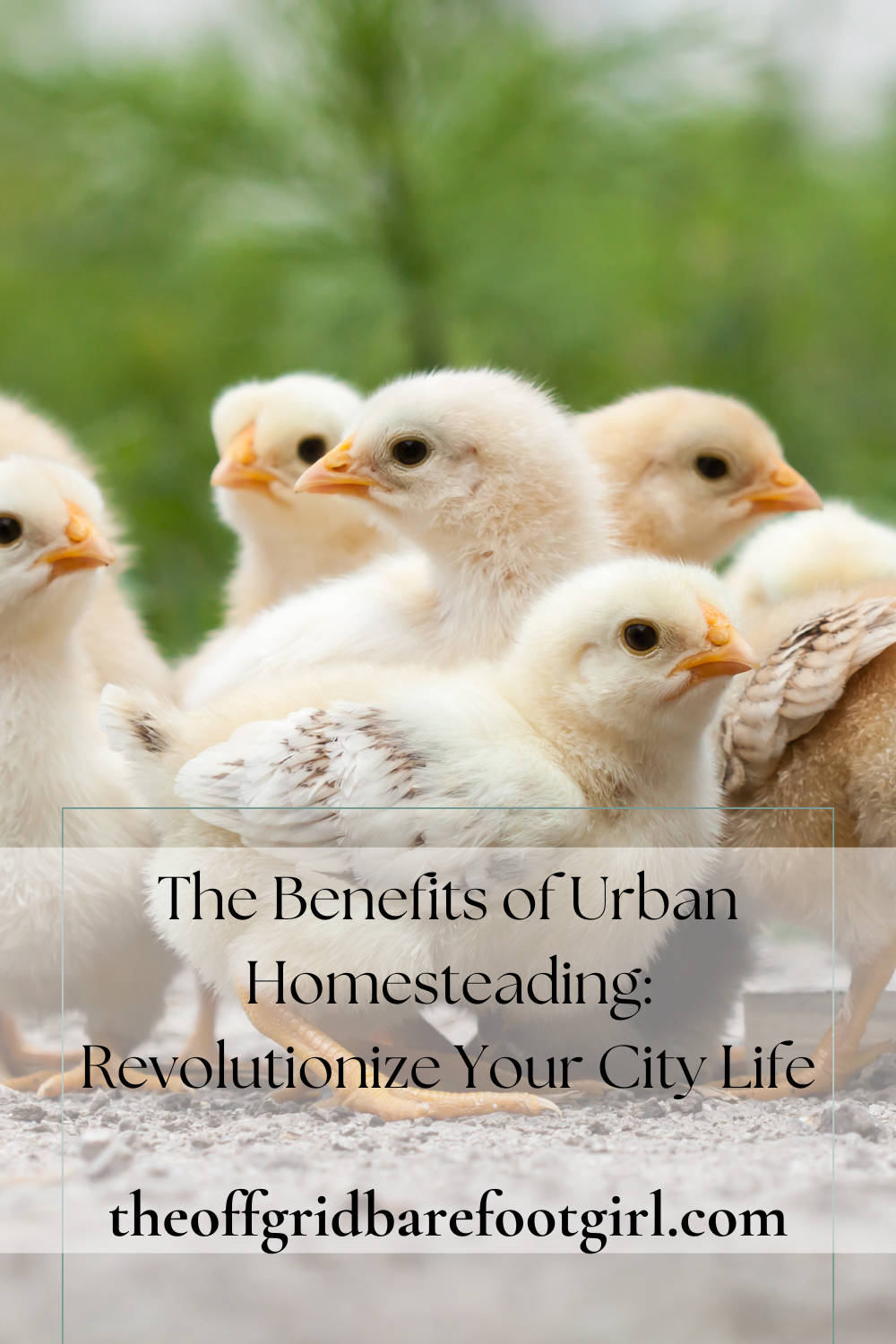
Frequently Asked Questions
1. Can I practice urban homesteading if I live in an apartment or have limited outdoor space?
Urban homesteading is adaptable to various living situations, including apartments and limited outdoor spaces. Even with a small balcony or windowsill, you can grow herbs, vegetables, and small plants using vertical gardening techniques or container gardening. Additionally, you can explore community gardens or local urban farming initiatives that provide shared spaces for growing food.
2. Is it legal to raise animals in an urban environment?
The regulations regarding raising animals in urban areas vary depending on the city and local ordinances. Some cities allow small-scale livestock, such as chickens, rabbits, or bees, while others have specific restrictions or prohibitions. It is essential to research and comply with local regulations and consider factors like noise, space requirements, and waste management before integrating livestock into your urban homesteading practice.
3. What are some essential DIY skills I should learn for urban homesteading?
Learning basic DIY skills can greatly enhance your urban homesteading journey. Some essential skills to consider include carpentry for building raised beds or chicken coops, preserving and canning for food preservation, sewing for repairing clothes or making reusable items, and basic plumbing and electrical skills for maintaining your homesteading infrastructure.
4. How can urban homesteading contribute to community building?
Urban homesteading fosters community building by encouraging resource sharing, collaboration, and knowledge exchange among neighbors. Community gardens, workshops, and events centered around urban homesteading can bring people together, create a sense of belonging, and strengthen social connections. Additionally, surplus produce or homemade goods can be shared or traded within the community, promoting a spirit of reciprocity and support.
Summary
I hope I have inspired you to live sustainably with these tips and products.
If you were encouraged by this post, I invite you to check out my FREE Printables Page for fun free printables, planners, and charts.
ENTER MY FREE Printables Page HERE
Here are some more of my gardening inspiration posts to check out!
How to Feed Your Family During the Government Shutdown
12 Best Tips for Creating an Eco-Friendly Household
Survival Lessons from the Great Depression
The Best 15 Homesteading Blogs to Follow for Inspiration
How to Criminal-Proof Your Home with These 5 Steps
How to Create Your Cottagecore Aesthetic Dream Home
Ideas for Rustic Living Room Vibes You’ll Love All Year Round!
How to Prep Your Home for Chilly Fall Nights
Bring Back the Magic of Fireflies and Lightning Bugs with Solar Power!
The Ultimate Portable Power Bank for Homesteaders and Preppers!
A Bug Out Bag That’s Actually Ready — When You Need It Most!
Magical Ways to Use Fairy Lights in Your Off-Grid Home
How to Live a Cozy Off-Grid Life
The Best Off-Grid Kitchen Tools for Indoors (No Power Needed!)
DIY Solar Made Simple: How I Powered My Off-Grid Life with Practical Preppers!
Sleeper Cells in America: What You Need to Know Now!
How People Are Surviving in Broken Cities with Broken Systems
When the World Hurts, We Prepare with Purpose
How to Live On Raw Land: Everything You Need to Know!
How to Do Off-Grid Laundry with Eco-Friendly Laundry Detergent!
Hollywood on Fire! What Secrets Are In the Ashes?
FEMA Concentration Camps? Are Echos of the Past Returning?
How Likely Is a Russian EMP? One Pulse Could Black Us Out!
What Dark Secrets Lie in The Bird Flu Symptoms?
The Blackout Sun: Who Is Blacking Out Our Sunlight?
More Posts!
How to Bug-In During a Deep Freeze!
‘FOGVID-24?’ What’s in the Mysterious Fog That’s Making Everyone Sick?
From Snow to Sow: Plan Your Spring Garden Now!
11 Fun Ways to Brighten Your Spring Garden with Personality
Top 10 Spring Garden Crops to Harvest in 30 Days and Eat Now!
The Best Survival Crops for Caloric Survival
More Posts!
My Victory Garden: What I Learned from 5+ Years
Why Every Family Should Have a Victory Garden in Their Backyard Now!
The Best Perennials for a Long-Term Survival Garden
The Best Essential Oils for Plants That Repel Garden Bugs
How to Grow Green Garden Peas: Perfect Plump Peas!
Hugelkultur: Does This Epic Pioneering Method Actually Work?
9 Ways to Celebrate Earthing Day in Your Garden!
Gardening Indoors: Secrets of Growing Your Food Inside!
How to DIY a Milk Jug Drip Irrigation System!
Why Cedar Mulch Is The Perfect Natural Weed Barrier
Gardening Projects
Onions: How to Grow Onions for Storage
Peas: How to Grow Garden Peas for a Bumper Crop
Carrots: How to Grow Carrots for a Bountiful Harvest
Prep Your Garden for Spring Planting with These Expert Tips!
How to Grow a Prepper Garden to Survive and Thrive
The Best Garden Tools You Need for a Productive Season
Fastest Growing Vegetables for Your Survival Garden
How to Grow Marigolds As Pest Control In Your Vegetable Garden
Must-Have Tools for a Successful Balcony Vegetable Garden
How to Effectively Combat Powdery Mildew in Your Garden
The Best Tips for Organic Gardening
How to Release Ladybugs In Your Garden for Organic Pest Control
More Posts!!
The Best Garden Snail Control Strategies
The Best Spring Vegetables to Grow in Your Garden
Seed Starter Mix: How To Make Your Organic Seed Starter Mix At Home
How to Grow a Productive Canning Garden
How to Plant and Grow a Salsa Garden
Easiest Heirloom Vegetable Seeds to Grow Now
How to Use the Hand Twist Claw Tiller: Tackling Tough Soil
More Fun Gardening Posts to Check Out!
Planning Your Garden: How to Plan a Vegetable Garden: Expert Green Thumb Tips!
Winterizing the Garden: How to Winterize Your Vegetable Garden: Step-by-Step Checklist
Mulching the Garden: How to Make Leaf Litter Mulch
Grow a Pumpkin Patch: How to Grow a Pumpkin Patch in Your Backyard
How to Grow a Fall Garden: 9 Best Fall Crops
Clever Ways to Incorporate Indoor Composting into Your Home
How to Start Composting for the Garden: A Step-by-Step Guide
The Ultimate Guide to Composting in Your Suburban Backyard
Why I Built A Survival Garden in My Backyard
16 Best Medicinal Herbs to Grow in Your Garden Now
Blessings,
The Off Grid Barefoot Girl




